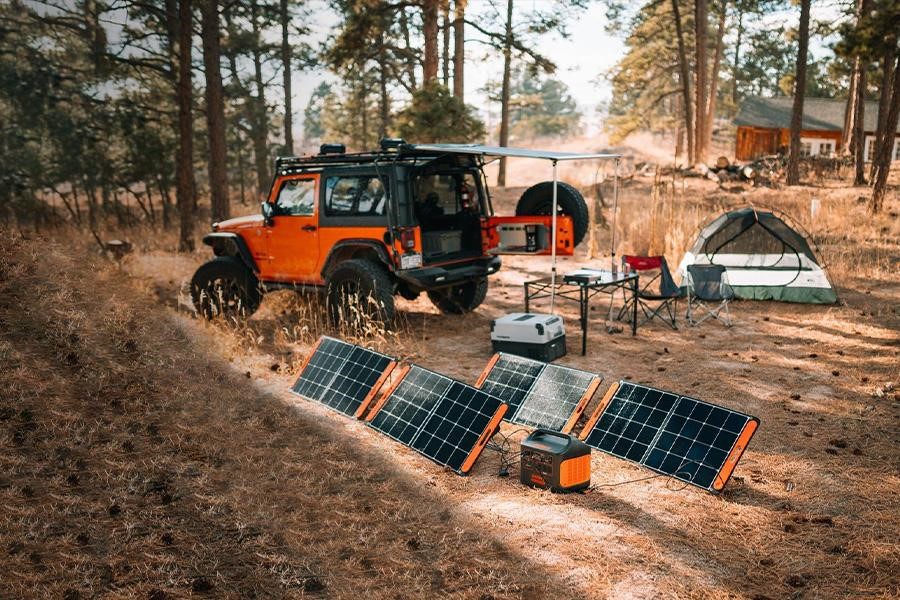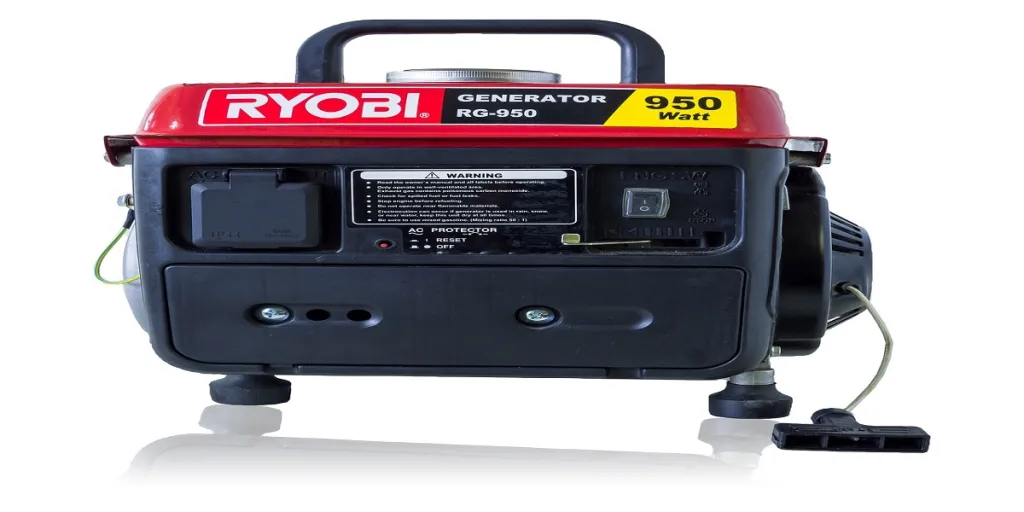Portable power stations have come a long way since their inception. Earlier, they were limited to huge, simple power banks you could plug your devices into. But now, there exist advanced and versatile models that could be used for a wide array of applications across the globe.
For instance, portable power stations are primarily used for outdoor camping, RV travel, and other leisure and entertainment scenarios in the US and Europe. In Asian countries like Japan, however, they are a source of relief in emergency disaster scenarios, such as earthquakes, where they are used to power defibrillators and small oxygen supply machines to save lives.
Choose the right portable power station for your customers’ needs by learning more about them in this article.
Table of Contents
The benefits of a portable power station
How to choose the right portable power station
Conclusion
The benefits of a portable power station
People who purchase a portable power station often make their decision based on one or two of its use cases and then gradually discover the entire realm of possibilities over time. You might know portable power stations are a great way to ensure there is always electricity, especially when it’s needed the most. But what about the other advantages? Here are a few ways people can benefit from using portable power stations.
Safe to use indoors
Gas-powered generators feature carbon monoxide gas-producing engines, making them dangerous to operate in a house or garage on a long-term basis. Portable power stations, on the other hand, are powered by batteries and produce non-toxic fumes instead of carbon monoxide gas. This makes them a safer option for indoor usage.
Portable
Traditional power generators are large and bulky, making it harder to carry them around or store them in your home. Portable power stations, however, are light and come in various sizes, starting from the size of a small drink cooler. This makes them easy to carry along or store in your home or SUV alongside your luggage.
Cost-efficient
A portable power station requires little maintenance, while old-school generators demand constant spark plug and filter changes. Furthermore, portable power stations with solar panels will offer you free electricity as long as you want.
Versatile
The use cases of portable power generators are manyfold. Whether you need to power your laptop, phone, or appliances during an emergency or on your outdoor camping trips, these generators have you covered. A few portable power generators even come with built-in fans and lights for use in a wide variety of situations.
How to choose the right portable power station
The right portable power station for your customer will depend on their unique lifestyle and requirements. For instance, how and where they wish to use the power station, the wattage requirements, and appearance. To ensure you have enough options to meet your customers’ demands, here are a few questions you should consider answering from your customers’ perspective.
What is the primary usage of the power station?
To begin with, it is essential to consider buying needs, as these change from person to person and region to region. For example, Japanese buyers prefer white, small, and lightweight portable power stations. This is due in part to their use in emergencies, where they need to be quickly accessible, visible, and easily transportable. On the other hand, in the west, people are inclined towards buying bulky, high-power combination suits with solar charging panels to explore the world without limits. Additionally, you should also ensure that portable power stations have helpful features like solar panel outputs, USB ports, and wireless charging, making them ideal for the widest range of needs possible.
How many devices do you need to power?
The most important consideration when investing in portable power stations for your customers is the capacity. A portable power station’s output capacity is measured in watt-hours (Wh). It essentially tells you how long the battery can power a device that requires power equivalent to 1 watt of energy. For instance, the China Factory 600W portable generator has a capacity of 625Wh, meaning it can power a 10W light bulb for around 60 hours continuously.

To get an idea of the ideal capacity for portable power stations, consider figuring out the number of devices your customers will need to power a home/RV during a blackout. Depending on this, you will easily be able to calculate their wattage requirements and thereby invest in suitable portable power stations.
Another vital point to keep in mind is that the capacity of a power station can be related to its weight. Generally, equipment with an output capacity of 1.5 kWh will weigh about 12-18kg. Therefore, larger-capacity power generators are a good idea for RV travel or fixed courtyard scenarios — since they can be heavier than lower-capacity ones.
How long does it take to fully charge the battery?
Portable power stations come with various battery recharging cycles. For instance, a portable generator with lower capacity can be charged in over an hour, while it might take 10 hours to charge a 1000W power station. Essentially, if you wish to use a portable power station without charging it for longer periods, you must choose one that can last longer.
It is also a good idea to consider the battery types at this stage since portable power stations are essentially large batteries wrapped in technology. Most often, these generators are powered by Lithium-ion batteries that are tolerant to high temperatures and last longer.
What can you charge using the portable power station?
The more output ports a portable power station has, the better. Most portable generators in the market come with USB ports, AC and DC ports, and wireless charging options. AC outlets are much like the wall sockets you find at home or in your office, and these can power most appliances. Therefore, it is a good idea to have at least two such ports to cover the bases when traveling. DC ports, meanwhile, are also used to supply direct current, but they look more similar to the sockets you find in your car.
However, what if your customer is a digital nomad who requires a portable power station that powers his WiFi router? Fortunately, a lot of portable power station manufacturers these days are developing devices with specific output ports for powering radios, WiFi routers, auxiliary lighting, and more.
How to charge the portable power station?
Most portable power stations can be plugged into the wall and recharged. While this is a more convenient way to charge the power station when you are at home or in the office, recharging them when on the go or during a blackout can be a challenge.
For this reason, solar panels are a must-have feature for portable power stations. You can find many types of solar power stations on the market. However, if your customers already have a portable generator, consider offering them solar panel add-ons.

Another option to consider is an adapter to recharge the portable power generators from your car. This is an excellent option for cloudy days or when you wish to speed up the recharging process by combining two methods.
How easily can it be carried around or stored?
The last thing to consider when investing in portable power stations is their ease of storage. Most portable power stations are small and can be easily carried around or stored. However, the larger the capacity, the heavier and bigger a power station can get.
Your customers should therefore ensure they have enough space in their homes or vehicles should they wish to obtain a high-capacity power station. Ask your customer to take measurements of where they wish to store the power station to be on the safer side.
Similarly, consider the space in your warehouse or shop before you buy portable power stations wholesale. You don’t want to stock up on high-capacity, bulkier generators if there is not enough space to store them and if your customers wouldn’t necessarily buy them. So, plan your purchase by considering your customers’ preferences — regarding colors and materials — as well as your storage capabilities.
Conclusion
All portable power stations are built differently, making it hard for sellers to stock the right power generators that appeal to their customers. However, by carefully considering the tips mentioned in this article, you will be able to overcome that challenge with ease. Remember that you are buying for your customers, so their preferences should be your top priority.
If you feel most of your customers want a lower-capacity, lightweight generator, invest in more portable power stations and a few high-capacity bulky ones for the minority. Also, understand that a lot of features overlap. For example, your customer might want a faster charging generator with a larger capacity. However, the larger the capacity, the longer the recharging time. So, in such cases, you will have to find the sweet spot — a portable power station that features the best possible capacity and the fastest possible recharging time for that capacity.
If you are looking to purchase portable power station wholesale, check out the manufacturers on Alibaba.com for some amazing deals.




